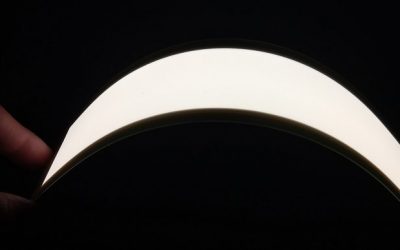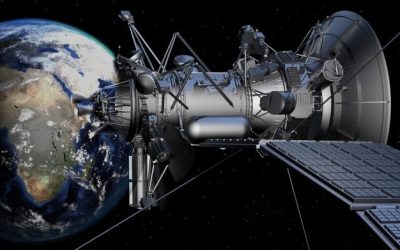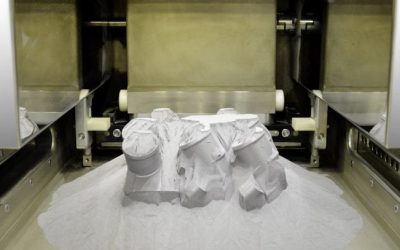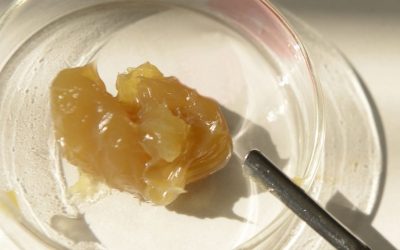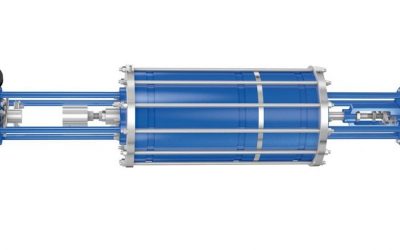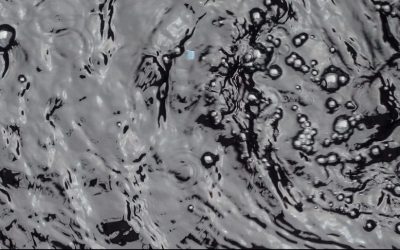By Kirsten Severing, Lorna Stimson, Peter Gregory, Martin Preuss, and Jolke Perelaer
Over 6,000 participants followed the call of the MRS to their traditional annual post-Thanksgiving science and technology summit in Boston from November 30-December 4, 2015. The society has been organising their Fall Meeting in the city for 40 years and much has changed in that time—but some things stay the same.
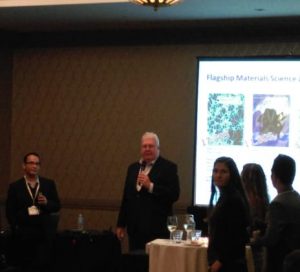 So what stays the same? It has always been a shock to the system to arrive in Boston in November to be greeted by huge Christmas trees in the hotels and festive music in the lifts. For many years now the conference has been one of the main focal points of the materials community in its broadest sense, with participants from all regions of the world and also from physics, chemistry, biology, engineering, medicine and more, and in many ways the MRS Fall meeting has become synonymous with the interdisciplinary nature of what materials science has become.
So what stays the same? It has always been a shock to the system to arrive in Boston in November to be greeted by huge Christmas trees in the hotels and festive music in the lifts. For many years now the conference has been one of the main focal points of the materials community in its broadest sense, with participants from all regions of the world and also from physics, chemistry, biology, engineering, medicine and more, and in many ways the MRS Fall meeting has become synonymous with the interdisciplinary nature of what materials science has become.
And that is where the changes that have occurred over the years start to become more apparent. Unprecedented resolution of atomic and molecular processes has opened up new areas of research that were inconceivable even 20 years ago let alone 40. Increasing emphasis in the program on addressing global grand challenges such as energy provision, environmental protection and remediation, communication, and in particular healthcare is no surprise, but it is clear that physical scientists and engineers have ever more to offer in these areas, and this is attracting other participants, particularly in the case of healthcare materials where medics and clinicians are increasingly recognising the contributions that their colleagues can make.
Orientation towards communities delivering solutions to these grand challenges rather than to the more traditional scientific fields common 10 years ago is also observable in the strategies of the equipment manufactures. Thermo Fisher, for example, is focusing on providing suites of equipment/analytical methods which are tuned to the needs of the nanotechnology community, or the energy materials or the healthcare materials communities, clearly also recognising the increasing funding and governmental support for solution-oriented work.
Another more recent innovation from the MRS is their Meeting App, which finds increasing acceptance and is a welcome tool, bearing in mind that the alternative is the printed conference programme which looks like (and weighs like) the Boston telephone directory and covers 55 symposia and many other meetings, workshops and activities, as well as a large and popular exhibition over the 6 days of the conference.
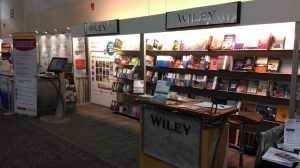 Particular highlights for the scientific programme included the Kavli Award Lectures, from Ali Khademhosseini (Harvard-MIT, bioengineering) and Yi Cui (Stanford, energy/environmental materials). Some of my other favourites were the presentations from John Rogers (Illinois, bioinspired 2D/3D composites), Pulickel Ajayan (Rice, engineering 2D crystals), Lei Jiang (Chinese Academy, “Ying and Yang” surface science), Zhenan Bao (Stanford, energy harvesting polymers), and David Mooney (Harvard-Wyss Inst., viscoelasticity and cell differentiation).
Particular highlights for the scientific programme included the Kavli Award Lectures, from Ali Khademhosseini (Harvard-MIT, bioengineering) and Yi Cui (Stanford, energy/environmental materials). Some of my other favourites were the presentations from John Rogers (Illinois, bioinspired 2D/3D composites), Pulickel Ajayan (Rice, engineering 2D crystals), Lei Jiang (Chinese Academy, “Ying and Yang” surface science), Zhenan Bao (Stanford, energy harvesting polymers), and David Mooney (Harvard-Wyss Inst., viscoelasticity and cell differentiation).
Innovative thinking is the minimum requirement at this meeting, and many others rose admirably to the challenge. Paul Braun (UIUC) in improving electrode capacities for secondary batteries, Younan Xia (Georgia Tech) demonstrating great control of plasmonic nanocrystals, Molly Stevens (Imperial College) demonstrating nano-needle arrays for accessing and characterizing living cells, and Joanna Aizenberg making everybody´s life a lot easier with innovative but simple cell-culture-substrate-transfer techniques.
Sir Richard Friend capped off a fine Wednesday with the von Hippel Award address, the top Prize of the MRS, explaining to an enthusiastic audience where research on semiconducting polymers has come from and where it is going too, particularly in plastic electronics and optoelectronics.
And there was much more to admire, with Daniel Morse (UCSB) telling us what can be learned in the field of optical materials from studying the biochemical and biomechanical processes in squids, Chad Mirkin (Northwestern) showing the power of 3D molecular architecture design in precision therapeutics, and, and…and.. All in all, a fantastic place to exchange on science and technology.
The conference provides important impetus to the field and we are sure much inspiration to the many participants, so we would like to close by saying Happy 40th MRS Boston, with the conviction that certainly for this field and this conference in particular we still have the best to come. After all, we all know that Life Begins at 40!











